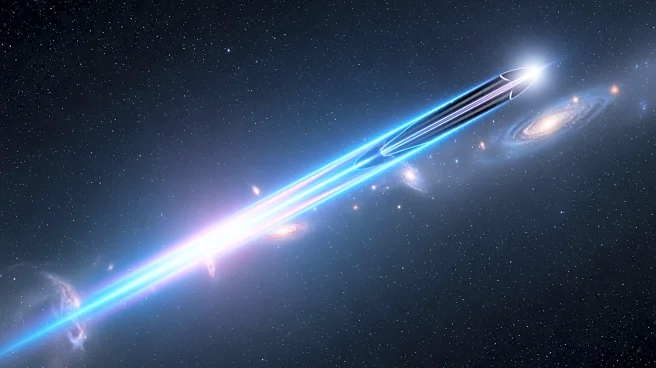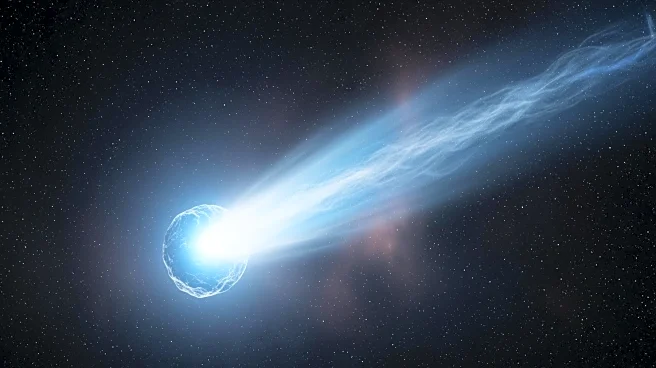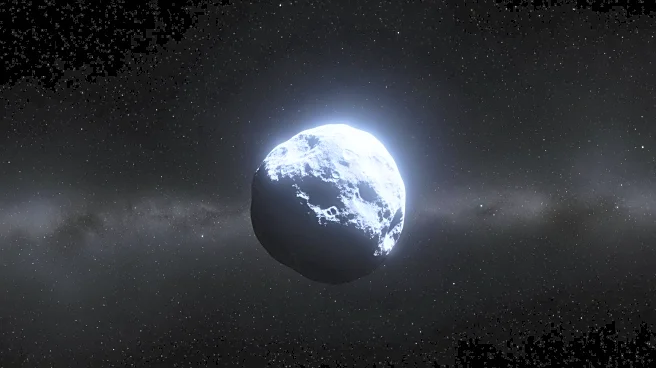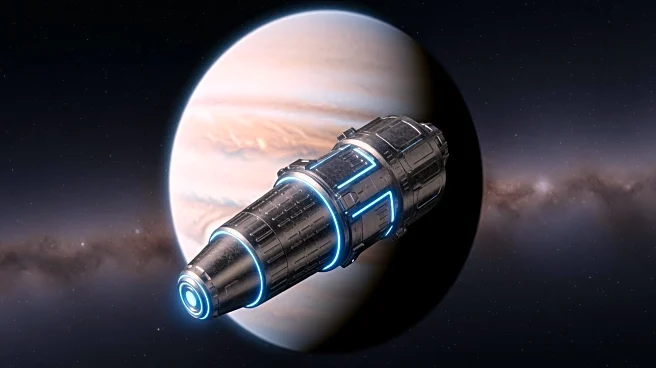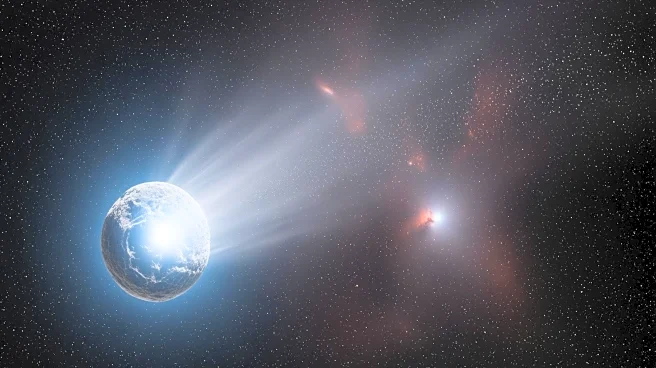What's Happening?
NASA has identified a new interstellar object, 3I/ATLAS, discovered by the ATLAS survey telescope on July 1, 2025. This object is the third confirmed interstellar wanderer, following 1I/'Oumuamua in 2017
and 2I/Borisov in 2019. Unlike typical comets or asteroids, 3I/ATLAS has a hyperbolic trajectory, indicating it is not gravitationally bound to the Sun and will escape the solar system. The comet's composition, including carbon dioxide, hydrogen cyanide, and atomic nickel, suggests it originated from a stellar environment vastly different from our solar system. Observations have revealed a unique chemical signature, with gaseous nickel released in higher quantities than iron, hinting at its formation in a cold, carbon-rich nebula. The comet's passage offers a rare opportunity to study alien chemistry and the building blocks of distant star nurseries.
Why It's Important?
The discovery of 3I/ATLAS is significant as it provides a unique opportunity to study the chemistry and formation of objects from outside our solar system. This interstellar visitor allows scientists to analyze alien star systems using Earth-bound tools, offering insights into the building blocks of faraway star nurseries. The comet's unique chemical composition challenges existing theories about stellar environments and formation processes. By understanding the makeup of 3I/ATLAS, researchers can gain a deeper understanding of the diversity and complexity of the universe beyond our solar system. This discovery not only contributes to scientific knowledge but also inspires a sense of wonder about the vastness of the cosmos and our place within it.
What's Next?
Observers will have the opportunity to view 3I/ATLAS as it emerges from behind the Sun in November 2025. The best viewing window will be shortly before dawn, particularly in regions like the southwestern United States. Large amateur telescopes will be required to catch a glimpse of this faint object. As 3I/ATLAS continues its journey through the galaxy, scientists will analyze the data collected during its flyby to further understand its composition and origin. This research may lead to new discoveries about interstellar objects and their role in the cosmic landscape.
Beyond the Headlines
The passage of 3I/ATLAS serves as a reminder of the interconnectedness of the universe and the potential for discovery beyond our solar system. It highlights the importance of continued exploration and observation of interstellar objects, which can provide valuable insights into the formation and evolution of star systems. The comet's journey also underscores the need for advanced technology and international collaboration in the field of astronomy to uncover the mysteries of the cosmos.
